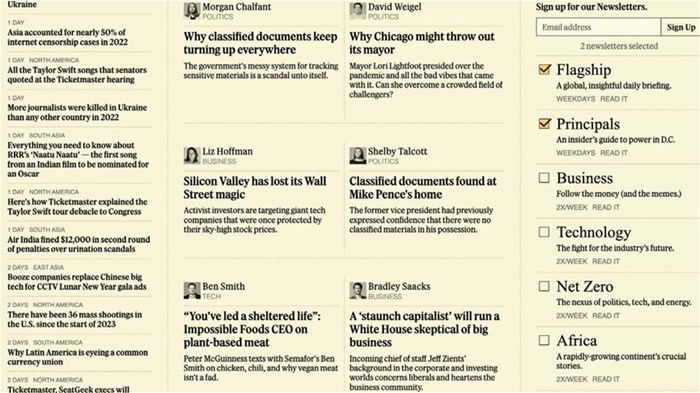
Top stories


Logistics & TransportIata urges global safeguards for aircraft systems as 5G/6G rollout continues
8 hours

AgricultureAgricultural exports from Africa are not doing well. Four ways to change that
Lilac Nachum 9 hours


In the 10th instalment of our annual ‘Challengers to Watch’ feature, we identify 20 rising companies from around the world and explore the broader trends, opportunities and threats to the status quo they represent.
Our roundup covers an expansive range of categories, markets and geographies, but all these companies share a firm rejection of ‘best practice’ and an understanding of the imperative to make their own rules.

We live in a world where trust is in crisis. According to Edelman, 6 in 10 people say their default state is distrust. And trust in traditional news media is no exception – journalists are second only to government leaders on levels of distrust.
So, news brand Semafor has a big ambition for progress on its hands.
A next-generation challenger, Semafor position the old world of news as broken and set out to ‘reimagine what it would mean to be a global daily newspaper or news publication in the 21st century’, according to founders Ben Smith and Justin Smith.
Semafor avoids talk of democratizing good quality journalism – and instead focuses on serving intelligent news customers, who ‘no longer know which sources to trust, feel a deep responsibility to be extremely well informed, [and are] looking to make sense of overwhelming news’.
Trust drives the core of Semafor’s journalism: a global, interconnected network of journalists with regional and on-the-ground expertise. And in this, the brand challenges some of the conventions of journalism it believes are driving polarization and distrust - for example, exporting news and reporters from London or New York and the idea of foreign
correspondence.
As an example of Semafor’s global ambition, six clocks show the time in DC, Brussels, Lagos, Dubai, Beijing, and Singapore at the top of its website. And, of course, the name ‘Semafor’ is a clear choice – not just a term for clear communication, but a word that means the same in 35 languages.

News is a hard business to launch, and Semafor’s approach of courting conversations with high-profile events (it was only after eight panel events the company launched its website and
newsletters) has built a steady base of hype and intrigue in what it does next.
At the core of the company’s strategy is a focus on changing some things that big legacy news institutions can’t change overnight.
For example, its over-commitment to the integrity of transparent journalism is apparent in ‘Semaform’, its original news format.
The format breaks the conventions of the category by making the anatomy of what it believes to be transparent journalism visible.
Each article is divided into ‘The News’ or ‘The Scoop’ (the facts), the ‘journalist’s view’ (shifting the focus from institutional trust to individual integrity), and ‘room for disagreement’ (providing what it sees as crucial for its ‘intelligent news elite’ to feel genuinely informed). It is hard to adjust to as a casual news
reader, but after a few encounters, it makes you question how news is and has long been, reported elsewhere.
Semafor is aware of the boldness of its ambition and the limits of what it can push – it decided not to make its slack channels publicly available in the name of transparency, for example.
The founders talk of a 10-year timescale for real progress to be made, which feels short given the long history of some of Semafor’s biggest competitors – at just four months old, we’re
watching this space.